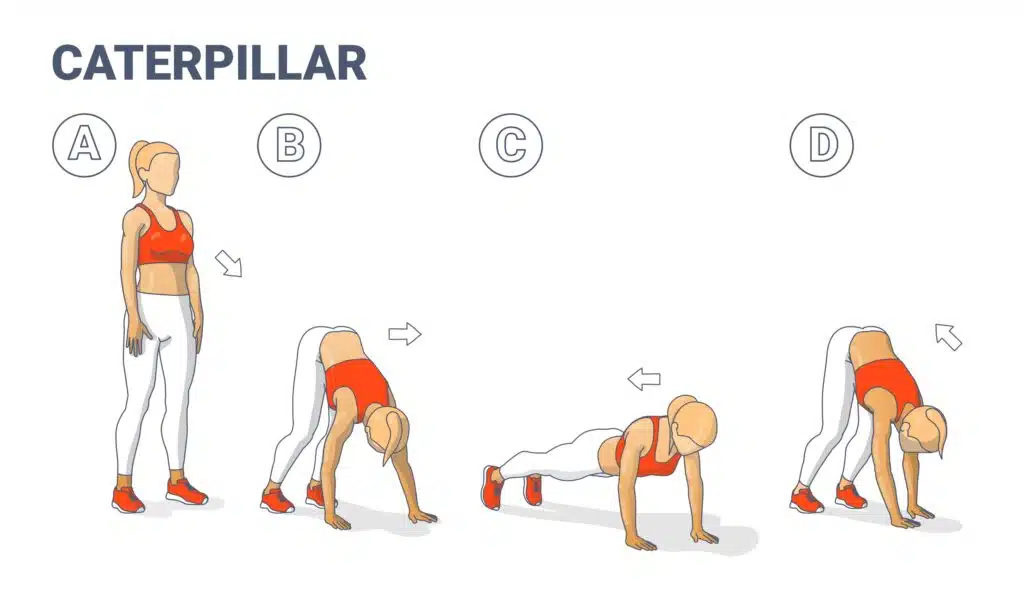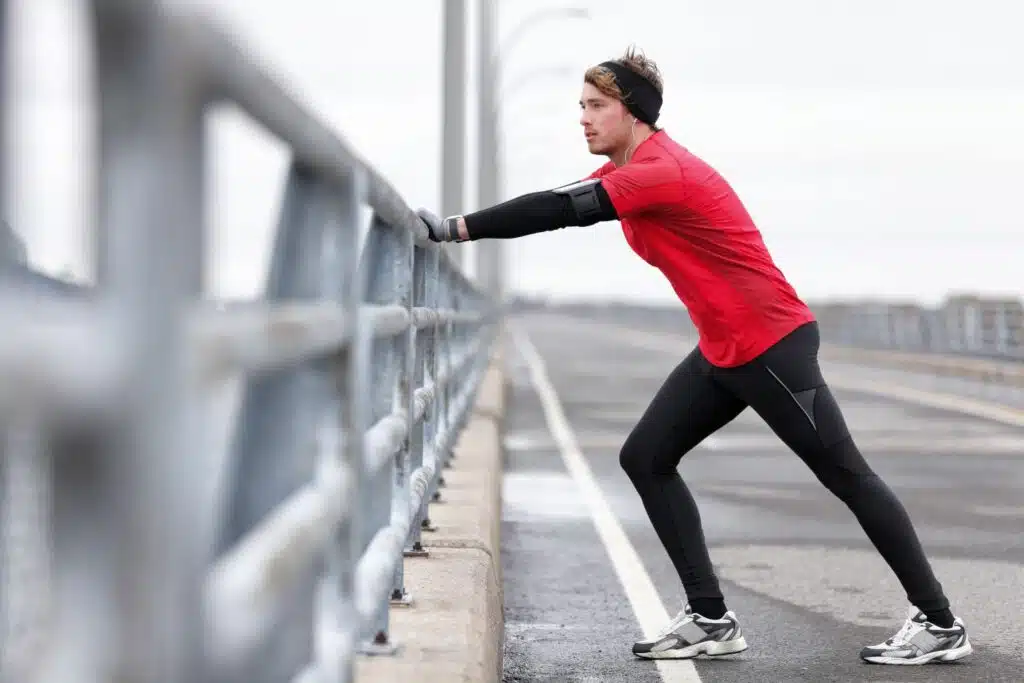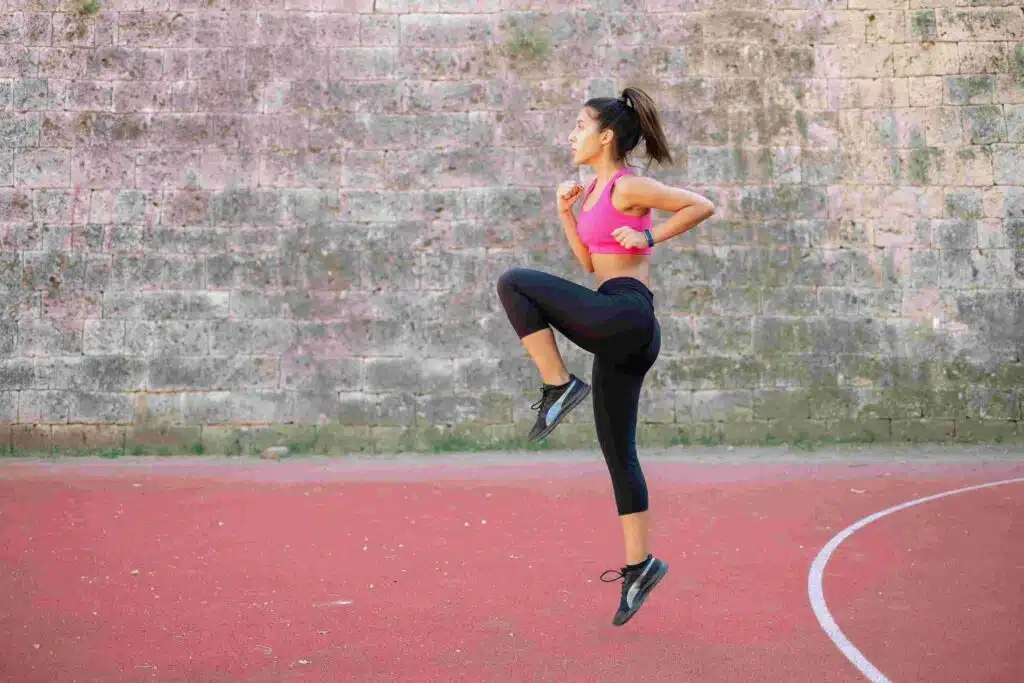Dynamic stretching is a great way to warm up your body before exercise or sports. It involves dynamic, active movements that target the muscles you will use during your activity and can help reduce the risk of injury by increasing blood flow and loosening tight muscles. They also help improve range of motion, mobility, agility, and coordination. Additionally, dynamic stretches are more engaging than static stretches which makes them easier to stick with as part of an effective pre-exercise routine. Whether you’re a professional athlete or just getting started on your fitness journey, they can provide numerous benefits for physical performance and health.

Difference between Dynamic and Static Stretches
Dynamic stretches are active movements that help get your body ready for exercise by using functional movement to increase your flexibility and also help you move better for your activity by increasing how far you can move and helping with coordination.
Static stretching is a type of stretching that involves holding a stretch for an extended period of time, usually about 30 to 60 seconds. Unlike dynamic stretching, static stretching is done by slowly lengthening the muscle to its farthest point and then holding it there. An example of a static stretch would be a hamstring stretch where you bend forward to touch your toes. A dynamic stretch for the hamstrings could be the inch worm, where you walk your feet up toward your hands from a push-up position and then walk your hands back out to a push-up position an d repeat.

Why are Dynamic Stretches Important?
Dynamic stretching can provide numerous benefits for physical performance and health. The benefits would include:
- Increased dynamic range of motion, mobility, flexibility and agility
- Improved coordination and body awareness
- Enhanced performance
- Reduced risk of injury by increasing blood flow and loosening tight muscles.
One major disadvantage of static stretching involves a problem with power output of the stretched muscles groups that may last up to an hour. That means that a person would have decreased speed or strength after holding a static stretch. This is important in sports where hundredths of a second can matter.

Dynamic Stretching Disadvantages
Dynamic stretching can help you move better and improve your performance, but it also has some disadvantages. It takes more time than static stretching as dynamic stretches involve functional, active movements that target the muscles you will use during activity. Also, they are more tiring than static stretching so if you are feeling tired or not up for a workout then dynamic stretching might be too much for your body. Also, they may not always work for everyone, so it’s important to make sure that any you do is suitable for your fitness level and abilities. And finally, some sports require the use of dynamic stretching more than others. They may be more important in sports that require explosive movement as opposed to endurance sports, like running, cycling or swimming.
How do You Warm-up?
Dynamic stretching is a way for athletes to get their bodies ready for exercise. It helps make muscles stronger and can help prevent getting hurt. An athlete would do dynamic stretches like jumping jacks or walking lunges before a workout to warm up. This makes the workouts more fun and keeps the athlete safe! Dynamic stretching is an important part of warm-up for athletes and should be done before each workout session.
- Do an activity to heat the body up
- Do Dynamic Stretches
- Perform activities specific to the sport or player position
- Quick Reaction for goalies
- Spike drill in volleyball
What are 3 Good Dynamic Stretches for Runners?
Dynamic stretching is an important part of any runner’s warm-up routine. It’s essential for loosening up tight muscles and increasing dynamic range of motion, flexibility and agility. Since running does not involve quick cutting movements, starting out by jogging is the main part of the warm-up. For some runners, this is that is needed but if you have the tendency to start out stiff then adding a few dynamic stretches can be hugely beneficial, Examples that are good for runners include:
- High Knees – Start with a jog in place, then lift your right knee up towards your chest while you drive the opposite arm forward. Repeat on the other side to complete one repetition. Do 10-15 repetitions.
- Butt Kicks – Start by jogging in place, then kick your heel back towards your butt with each stride. Repeat on the other side to complete one repetition. Do 10-15 repetitions.
- Skipping/Bounding – Alternately skip and bound forward for a short distance. Repeat for 10-15 repetitions. If you want to be fancy, you can look into A Skips or B Skips.
They can help you warm up your muscles properly and reduce the risk of injury while running. Use dynamic stretches as part of your warm-up routine before any run!

What are 3 good dynamic stretching for swimming?
Dynamic stretching is a great way to warm up before a swim, help improve your performance in the water and increase functional range of motion, mobility, flexibility and agility, as well as reduce the risk of injury. Here are some exercises that are good for swimmers:
- Arm Circles – Stand with your feet hip-width apart, arms extended out to the sides, palms facing down. Rotate your arms in a circular motion for 10-15 repetitions each direction.
- Shoulder Rolls – Standing with your feet hip-width apart and arms at your sides, roll both shoulders forwards 10 times and then backwards 10 times.
- Torso Rotations – Stand with your feet hip-width apart and hands clasped behind your head, elbows pointing out to the sides. Rotate your torso to the left and right for 10-15 repetitions each direction.
By doing dynamic stretching exercises before a swim session, you can improve your performance in the water and reduce your risk of injury. Make dynamic stretching a part of your warm-up routine for every swim session!
Conclusion
Dynamic stretching is an important part of any athletes’ warm-up routine. It helps make muscles stronger and can help prevent getting hurt. An athlete could do jumping jacks or walking lunges before a workout to warm up, which can make the workouts more fun and keep the athlete safe! Dynamic stretching exercises for different muscle groups can include high knees, butt kicks, skipping/bounding, arm circles, shoulder rolls, and torso rotations. It is important to do this before and after each workout session in order to improve performance and reduce the risk of injury.
Further resources such as instructional videos or tutorials can be found online to help guide athletes in proper techniques. Additionally, consulting with a coach, personal trainer or healthcare professional (like a Certified Chiropractic Sports Physician) could also be useful in improving dynamic stretch form as well as providing helpful tips tailored to individual needs. As dynamic stretching becomes a regular part of an athlete’s warm-up routine, they may find that they are able to perform better while being less prone to injury.
